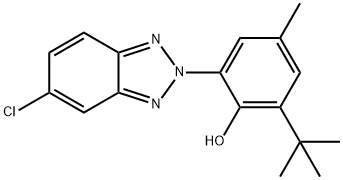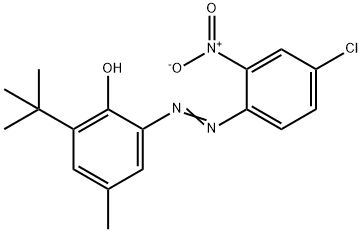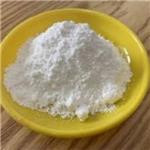Characterization
UV Absorber 326 is a UV absorber of the hydroxyphenylbenzotriazole class, which imparts outstanding light stability to plastics and other organic substrates.
Physical Properties

Features/Benefits
UV Absorber 326 has a wide range of indirect food approvals in polyolefins. It has a low volatility at high temperatures and high resistance to thermal degradation and can therefore be used without significant loss or decomposition in the polyolefin compounding and molding processes. In the use for the UV protection of polyester resins, TINUVIN 326 does not form colored complexes with the metallic salts used for the curing process of these resins.
Applications
UV Absorber 326 is especially suited for polyolefins and cold cured polyesters.
Guidelines for use

Handling & Safety
In accordance with good industrial practice, handle with care and avoid unnecessary personal contact. Avoid continuous or repetitive breathing of dust. Use only with adequate ventilation. Prevent contamination of the environment. Avoid dust formation and ignition sources. For more detailed information please refer to the material safety data sheet.
Chemical Properties
Pale Yellow Solid
Originator
Bumetrizole,Onbio Inc.
Uses
Bumetrizole is an intermediate reactant in the synthesis of UV light absorbers for polyester fibers.
Uses
UV-326 can potentially be used as a UV light filter in cosmetics and sunscreens. It may also be used as a corrosion inhibitor for the protection of building materials and automobiles.
Manufacturing Process
To a 2000 ml 3-necked, round-bottomed flask equipped with an agitator,
reflux condenser, nitrogen inlet and thermometer were charged 140.5 g of 2'-
hydroxy-3'-t-butyl-5'-methyl-5-chloro-2-nitroazobenzene, 119 g of isopropanol
and 80 g of Amsco mineral spirits. A stream of nitrogen was introduced over
the surface of the contents of the flask and the nitrogen atmosphere was then
maintained throughout the remainder of the reduction process. 13.7 g of 50%
aqueous sodium hydroxide solution and 222 g of water were added and the
temperature of the contents of the flask were adjusted to 55°C. The ratio of
the moles of alkali to moles of o-nitroazobenzene intermediate used was is
0.848/1. 104 g of zinc dust was added in 5 portions over a 2 hours period
with the temperature of the flask being held at 55-60°C with some slight
external cooling. The total concentration of iron impurities from all reactants
less than 150 ppm based on zinc used. After all the zinc was added, the
temperature was raised to 60°C and held at this temperature until a spot test
indicated no more o-nitroazobenzene intermediate was present. The
temperature was then raised to 65°C and held there for 4 to 5 hours or until
TLC analysis indicated that no more of the N-oxy-intermediate was present.
62.6 g of anhydrous sodium sulfate and 35.6 g of water were then added, the
batch was heated to 70°C and stirred for 15 min. The material was then
allowed to stand and separate into three liquid phases plus unreacted zinc
dust. The top two layers containing the desired product were transferred to
another flask. The remaining aqueous zinc slurry was washed at 65-70°C with
three successive 16 g portions of Amsco mineral spirits: isopropanol 50:50.
The combined product layers and wash liquids were then washed once at 70°C
with an aqueous hydrochloric acid solution made from 130 g of water and 40
g of 32% hydrochloric acid to remove cleavage amine by-products. A second
and third wash followed at 70°C with aqueous hydrochloric acid solutions
made each from 65 g of water and 20 g of 32% hydrochloric acid. The last
wash was essentially colorless. 14 g of 32% hydrochloric acid and 220 g of
isopropanol were added to the solution of the product. The batch was allowed
to crystallize slowly. The solid product form was filtered and washed with
isopropanol at 0°C to give 110 g of 5-chloro-2-(2-hydroxy-3-t-butyl-5-
methylphenyl)-2H-benzotriazole with a melting point of 140-141°C.
Therapeutic Function
Sunscreen agent
General Description
2-
tert-Butyl-6-(5-chloro-
2H-benzotriazol-2-yl)-4-methylphenol (UV-326) is a benzotriazole based UV absorber that can be used in the photostabilization of industrial materials. It can absorb the harmful UV radiation for the wavelength of about 290 nm.
Flammability and Explosibility
Not classified







